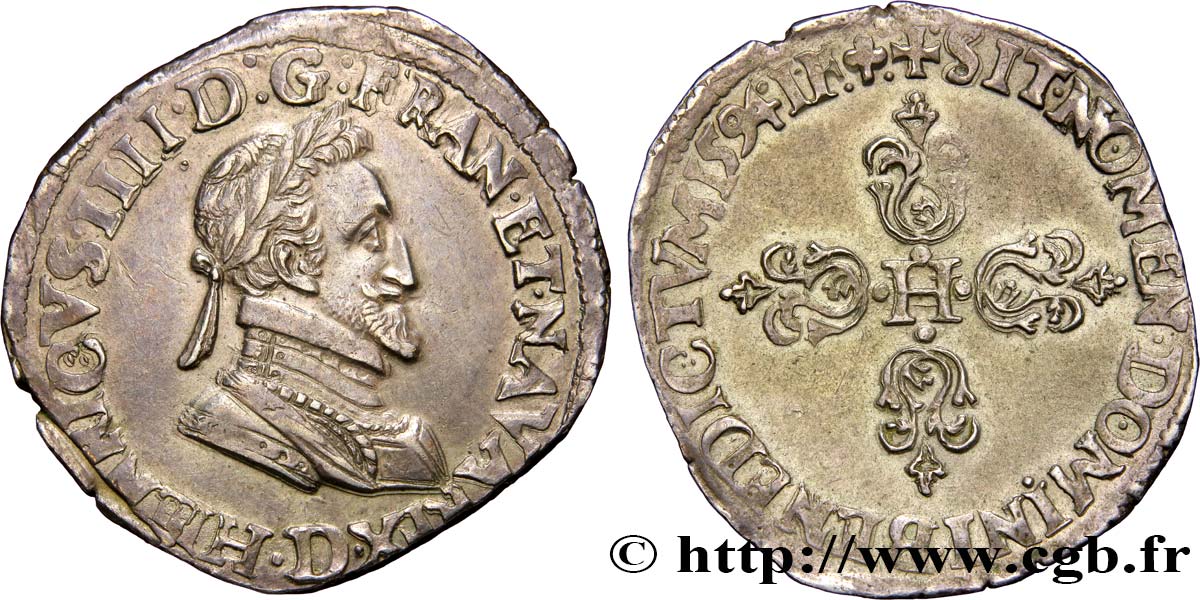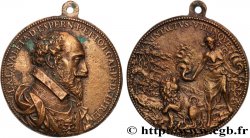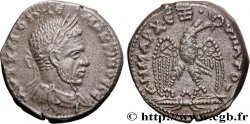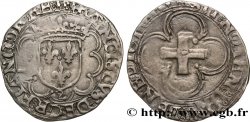Live auction - bry_390381 - HENRY IV Demi-franc, type de Lyon 1594 Lyon
Чтобы принять участие в торгах, вы должны войти в систему и стать подтвержденным участником аукциона. Войдите, чтобы сделать ставку. Ваш аккаунт будет подтвержден в течение 48 часов. Не ждите до закрытия торгов, чтобы зарегистрироваться.Сделав ставку на данный товар, вы вступаете в юридическое соглашение на покупку выбранного товара и нажатием кнопки «Сделать ставку» подтверждаете принятие вами условий интернет-аукционов cgb.fr.
Ставка может бить сделана только в полном эквиваленте евро. Торги закроются согласно времени, указанному в описании товара, все ставки, сделанные после закрытия торгов, учитываться не будут. Не следует откладывать предложение вашей ставки до последнего момента, так как система может не успеть обработать вашу заявку, и ваша ставка не будет принята. Более детальную информацию вы найдёте здесь: FAQ по интернет-аукционам.
Все ставки победителей подлежат комиссии 18%.
Все ставки победителей подлежат комиссии 18%.
| Оценить : | 3 500 € |
| Цена : | 2 500 € |
| Максимальная предлагаемая цена : | 2 500 € |
| Конец торгов : | 28 June 2016 16:06:00 |
| Участников : | 1 Участников |
Тип Demi-franc, type de Lyon
Дата: 1594
Монетный двор / Город: Lyon
Количество отчеканенных монет: 269100
Металл: silver
Проба: 833 ‰
Диаметр: 28,5 mm
Ориентация осей монеты: 5 h.
Вес: 7,06 g.
Комментарии о состоянии
Ce demi-franc est frappé sur un flan large, irrégulier et recouvert d’une patine grise. Le buste du roi est remarquablement bien venu et les poils de la barbe sont bien visibles. Exemplaire bien venu à la frappe, ce qui est rare pour ce type monétaire souvent très mal frappé
Ссылки в каталоге: :
Лицевая сторона
Аверс: легенда: .HENRICVS. IIII. D: G: FRAN. ET. NAVA. REX. - D, (LÉGENDE COMMENÇANT À 6 HEURES).
Аверс: описание: Buste de Henri IV lauré et cuirassé à droite avec petit col plat.
Аверс: перевод: (Henri IV, par la grâce de Dieu, roi des Francs et des Navarrais).
Обратная сторона
Реверс: легенда: + SIT. NOMEN. DOMINI. BENEDICTVM 1594 (MM): (TRÈFLE)..
Реверс: Описание: Croix fleuronnée avec une H en cœur.
Реверс: перевод: (Béni soit le nom du Seigneur).
Комментарий
L’un des plus beaux exemplaires connus pour ce type monétaire. Les chiffres de fabrication et de mise en boîte sont exprimés en demi-francs et comprennent à la fois des demi-francs (Sb.4778) et des quarts de franc au même type (Sb.4780). Ce type présente un portrait particulier qui a été utilisé entre 1594 et 1605. L'atelier de Lyon ferma provisoirement en 1606.








 Cообщить об ошибке
Cообщить об ошибке Распечатать страницу
Распечатать страницу Отправить мой выбор
Отправить мой выбор Задать вопрос
Задать вопрос Consign / sell
Consign / sell
 Информация
Информация















